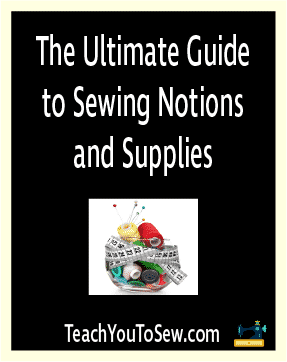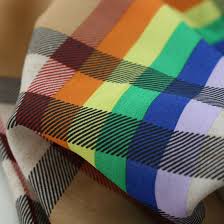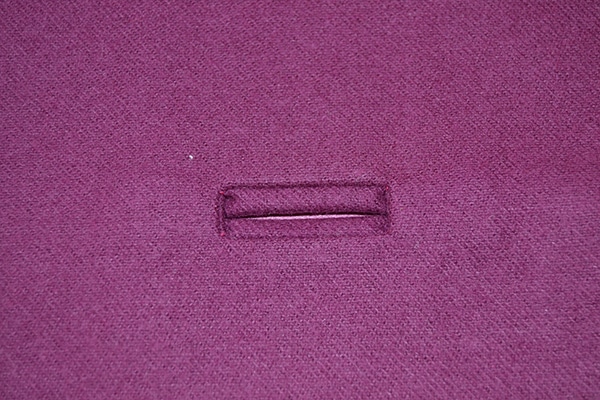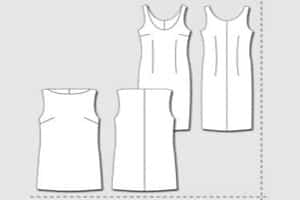An Introduction to Smocking and How to Get Started with It!
As you continue to explore the world of sewing, you will come across different sewing techniques. Most of them have something unique to offer, and learning some of the more common, useful ones that certainly help you get a lot more out of your sewing skills.
Smocking is one such technique that can help you give a piece of clothing beautiful embroidery effects. So in this post I’ll be telling you what smocking actually is as well as covering the important basics to help you get started with it.
Table of Contents
What is Smocking?
Smocking is basically a sewing technique that involves making very small pleats by gathering a part of the fabric for a decorative look and feel. For smocking a fabric, a part of it is gathered into small pleats and stitched using long stitches on the back of the fabric and very small ones on the front.
Something important to note here is that the technique of smocking is often accompanied with embroidery details like flowers on the smocked area of the fabric.
What is the Best Fabric for Smocking?
If it’s a fabric that can be sewn on, it can be smocked on. In other words, there’s probably no fabric that you can’t smock on, although some are going to be much more difficult to work with than the others.
However, the ones weighing on the lower side and having a smooth, evenly woven surface are much better choices for smocking. This means that plain and printed cotton, satin, poplin, cotton blends, lightweight denim and more can all be great options.
If you’re an absolute beginner to smocking, however, a checked cotton fabric will likely be your best bet, as it comes with detailed guidelines that make it much easier to gather evenly, which is an essential component of the smocking process.
On the other hand, unless you have a pleater, smocking on something like a knit or velvet fabric can get pretty challenging. The plain fabrics usually won’t disappoint though, given you have got the guidelines correct.
How Much Extra Cloth Does Smocking Demand?
Of course, as you will be pleating and gathering the fabric into very small parts, you will need to have more cloth to still make the final piece fit well. That said, the standard here is taking thrice the width of the final piece as the extra cloth.
However, it’s important to keep in mind that it’s only a standard, and the exact amount of extra cloth you should be taking will also depend on how tight your smocking stitches are. If you’re making loose stitches, you may need less of the fabric as extra cloth for smocking.
Finally, don’t forget to add the seam allowance to the extra cloth as well.
What Thread to Use for Smocking?
A regular embroidery machine thread is typically used for smocking jobs. However, you would want to use a cotton thread when smocking on cotton, and a linen thread when sewing on linen. The lustre of the cotton perle thread is hard to beat, though.
As far as the color of the thread is concerned, keep it simple. Don’t try to get crazy with it, but instead go with something that will help you achieve a more elegant look.
The pastel colors usually turn out to be a great choice for the light-colored fabrics. Just put the thread on the fabric to see if it matches well, and if it does, you’re probably good to go.
You can go with one or two colors or even two to three shades of the same color – it all works well. Coming to the number of strands to use, you usually can’t go wrong with three, though it’s recommended to use four strands of thread when working on some of the thicker fabrics out there.
Preparing the Fabric for Smocking
The recommended practices here are prewashing or preshrinking. While you may get better results by smocking on an unwashed fabric, but then you run the risk of the fabric shrinking after the work is completed.
So after prewashing, the next step will be to find the lengthwise grain of the fabric you’re using, and gather the cloth accordingly based on that. While it may not be possible for everyone, professionals often employ light fusible interfacing that works great for keeping the pleats in place, especially when smocking on thin fabrics.
We recommend purchasing your fabric at https://amzn.to/4b6kxLB. They have the widest selection of affordable, quality fabric.
How to Gather the Fabric?
There are three ways to gather the fabric:
- Gathering using your sewing machine
- Hand gathering
- Using a pleater to gather the fabric
Using your machine is the easiest approach you can take to gathering, as all you would need to do is baste the stitches to gather the fabric. However, this method has a downside, which is that the pleats don’t turn out to be very even.
But the thing is that gathering the pleats evenly is crucial when smocking, which means that there should be no difference between the pleat on the first row and the second row. If they are not the same, the result wouldn’t be as beautiful as it’s supposed to be with smocking.
Hand pleating, while effective, can be a bit tiring and frustrating. However, a pleater can get the job done the best; it offers the best of both worlds by being surprisingly easy to use, and gathering the fabric in a perfectly even way.
Smocking Transfer
A rather unique way of gathering pleats and getting around the issues associated with machine and hand gathering is using a smocking transfer. It’s basically a paper that’s covered with a whole lot of dots, having the same amount of spacing between one another. You can use a smocking transfer to gather even pleats by transferring it to your fabric using heat.
There are different types of smocking transfers available on the market, with the spacing of the dots varying as well. For very fine fabrics, you would be better off with a smocking transfer that has less spacings, as it will allow you to get shallow pleats which work great for smocking.
Finally, if you wish to do more reading on smocking, the book Classic Smocking by The Cheryl Lohman Collection can be a great resource.
We recommend purchasing your fabric at https://amzn.to/4b6kxLB. They have the widest selection of affordable, quality fabric.






